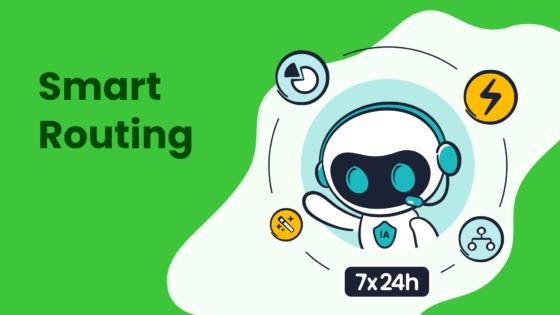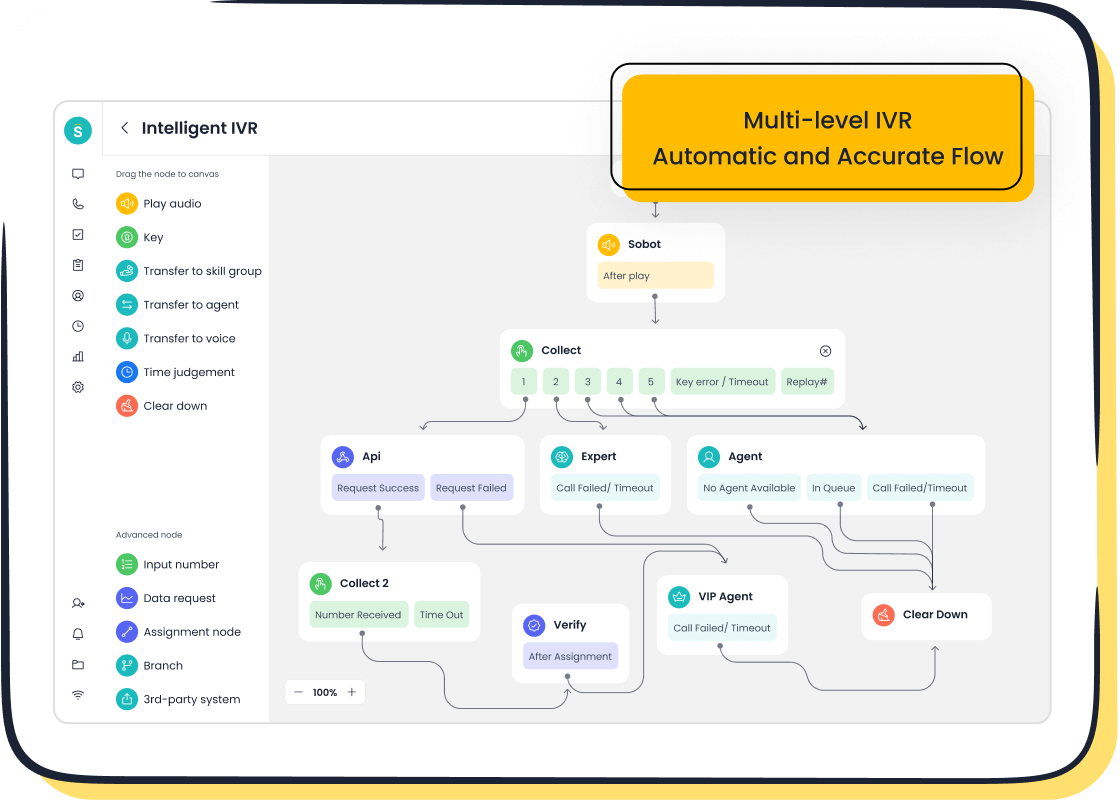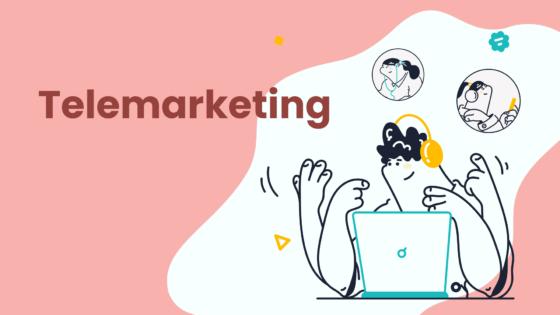Exploring the Upsides and Downsides of Multi Channel Platforms

You want your customers to reach you easily and get help fast. Almost 80% of businesses now use a multi channel communication platform for customer service, according to a recent IDC study (source). A multi-channel communication approach helps you connect with people on their favorite channels, like chat, email, or phone. Platforms like Sobot and Sobot AI make this possible by bringing everything into one place, such as the Sobot call center. Still, you should know the advantages and disadvantages. Some companies see better customer loyalty and more conversions, while others face issues with data and consistency.
Benefits Challenges More customer retention and loyalty Data can become fragmented Easier, real-time support Hard to keep messaging consistent Seamless channel transitions Integration and updates can be complex
Multi Channel Communication Platform Basics

What Is Multi-Channel Communication?
You use a multi channel communication platform to connect with your customers on many channels at once. This means you can talk to people through phone, email, live chat, social media, or even self-service portals. Customers like having choices. Some want to call, while others prefer to send a message or use chat. A multi-channel approach gives everyone the freedom to pick what works best for them. When you use a multi channel communication platform, you make it easier for customers to reach you, which can boost satisfaction and loyalty. Businesses that use multichannel support often see faster response times and happier customers.
Key Features
A strong multi channel communication platform brings all your channels together in one place. You get a unified system where agents can see every customer interaction, no matter where it started. This setup helps your team work faster and avoid missing important details. Many platforms use AI and automation to handle simple tasks, like creating tickets or sending quick replies. You can also route questions to the right agent, which speeds up problem-solving. Data analytics show you where customers struggle, so you can improve your service. With a multi-channel system, you support different communication styles, from quick chats to detailed emails.
Sobot’s Approach
Sobot takes the multi channel communication platform to the next level. You get an all-in-one workspace that unites phone, chat, email, and social media. Sobot’s Voice/Call Center lets your agents manage calls and messages from one dashboard. The platform connects with your CRM and other business tools, so agents always have the full customer picture. Sobot uses AI to automate routine tasks and route calls smartly. You can track performance with real-time analytics. Many companies, like Opay, have used Sobot to improve customer satisfaction and reduce costs. With Sobot, you make your multi-channel support simple, efficient, and reliable.
Pros of Multi-Channel Communication
Customer Reach
You want your business to connect with as many customers as possible. A multi-channel approach helps you do this by meeting people where they already spend their time. Some customers prefer phone calls, while others like email, live chat, or social media. When you use a multi-channel communication platform, you give everyone a way to reach you that feels comfortable and familiar.
- Multichannel marketing lets you expand your reach beyond a single channel. You can interact with customers on their favorite platforms.
- Studies show that moderate use of multi-channel platforms leads to the highest revenue and customer reach. If you use too many channels without a clear plan, you might see less benefit. Strategic use is key.
- Different customer groups respond to different channels. Middle-tier brands see the biggest gains from multi-channel marketing, while others need to tailor their approach for the best results.
Tip: Focus on the channels your customers use most. This helps you reach more people without spreading your resources too thin.
Sobot’s multi-channel communication platform makes it easy to add or remove channels as your business grows. You can manage phone, chat, email, and social media from one place. This flexibility helps you reach new customers and keep existing ones engaged.
Engagement & Satisfaction
When you offer more ways for customers to contact you, you make it easier for them to get help. This leads to higher engagement and satisfaction. Customers want fast answers and personal attention. A multi-channel approach gives them both.
- Multi-channel communication platforms let you provide seamless and consistent support. Customers can switch from chat to phone or email without repeating themselves.
- Centralized systems, like Sobot’s unified workspace, help your team see every interaction in one place. This means agents can respond faster and with more context.
- AI-powered tools and automation reduce wait times. Customers get quick answers to simple questions, and agents have more time for complex issues.
- Analytics help you track engagement and satisfaction. You can see which channels work best and adjust your strategy.
Customers who use their preferred channels report higher satisfaction and loyalty. They feel heard and valued.
Sobot’s platform uses AI to route questions to the right agent and automate routine tasks. This improves response times and makes every interaction smoother. You can also collect feedback and monitor satisfaction in real time.
Brand Awareness
A strong multi-channel marketing strategy does more than just answer questions. It helps you build brand awareness. When customers see your business on multiple platforms, they remember you. Consistent messaging across channels reinforces your brand and builds trust.
- Multi-channel marketing lets you share updates, promotions, and news on different platforms. You reach more people and keep your brand top of mind.
- Consistent branding and messaging across channels create a unified customer experience. Customers know what to expect from your business.
- Proactive support and outreach show customers you care. This builds positive associations with your brand.
A well-executed multi-channel approach can turn first-time customers into loyal fans.
Sobot’s platform helps you keep your messaging consistent. You can manage all your communications from one dashboard. This makes it easy to maintain your brand voice and respond quickly to trends.
Sobot Voice/Call Center Benefits

Sobot’s Voice/Call Center stands out in the world of multi-channel communication. You get a unified workspace where agents can handle calls, chats, emails, and social messages without switching screens. This saves time and reduces errors.
- The platform offers intelligent IVR, smart call routing, and AI-powered voicebots. These features help you manage high call volumes and provide 24/7 support.
- Sobot’s global network ensures high uptime (99.99%) and reliable service, no matter where your customers are.
- Integration with CRM systems gives agents a complete view of each customer. This leads to more personalized service and faster resolutions.
- Real-time analytics let you monitor performance and make data-driven decisions.
Sobot’s multi-channel approach supports businesses of all sizes. You can scale up as you grow and add new channels easily.
With Sobot, you can launch outbound campaigns, track calls, and automate routine tasks. The platform’s flexibility and advanced features make it a powerful tool for multi-channel marketing and customer support.
Key benefits of using Sobot’s multi-channel communication platform:
| Benefit | Description |
|---|---|
| Unified Workspace | Manage all channels from one dashboard |
| AI and Automation | Speed up responses and reduce manual work |
| Global Support | Reach customers worldwide with high uptime |
| Seamless Integration | Connect with CRM and other business tools |
| Real-Time Analytics | Track performance and improve strategies |
| Scalable Solution | Add or remove channels as your business grows |
When you use a multi-channel approach with Sobot, you improve customer reach, engagement, and satisfaction. You also build stronger brand awareness and set your business up for long-term success.
Cons of Multi-Channel Communication
Complexity
Managing a multi-channel communication platform can feel overwhelming. You must keep track of many channels at once, such as phone, email, chat, and social media. Each channel has its own rules and best practices. If you do not have a clear plan, things can get messy fast.
Many businesses face these challenges:
- You need to choose the right mix of channels that match your goals and your customers’ preferences.
- You must use a unified platform to bring all communications together. This helps you avoid confusion and keeps your team organized.
- You should make sure your system works on different devices and can grow with your business.
- Security and privacy are important. You need strong encryption and network protections.
- Some companies use white labeling to reduce development work and keep their brand strong.
Managing complexity takes planning and the right tools. If you do not address it, your team may feel lost, and your customers may get frustrated.
AI can help you handle complexity. It automates simple tasks and keeps responses fast and accurate. For example, Sobot uses AI to route calls and messages, making sure customers get help quickly. This reduces manual work and helps your team focus on more important issues.
Cost & Resources
Running a multi-channel platform often requires more money and people than you expect. You need to pay for software, hardware, and sometimes extra staff. Training your team to use new tools also takes time and effort.
Here are some common costs and resource needs:
- Subscription fees for each channel or platform.
- Integration costs to connect your channels with your CRM or other business systems.
- Ongoing maintenance and updates to keep everything running smoothly.
- Training sessions for your team to learn new systems.
- Hiring or reallocating staff to manage increased communication volume.
A report from Gartner shows that companies often underestimate the resources needed for multi-channel support. If you do not plan for these costs, you may face budget overruns or service delays.
Sobot helps reduce some of these costs by offering an all-in-one solution. You can manage calls, chats, emails, and social messages from one dashboard. This unified approach can save you time and money, but you still need to invest in setup and training.
Consistency Challenges
Customers expect your brand to sound the same everywhere. If your message changes from one channel to another, people may lose trust. Keeping your tone and information consistent across all channels is hard, especially as your business grows.
Some reasons for inconsistency include:
- Different teams handle different channels, leading to mixed messages.
- Lack of a centralized content management system.
- Technical problems when integrating multiple platforms.
- Adapting content for each channel without losing your brand voice.
Customers notice when your message changes. Inconsistent information can confuse them and hurt your reputation.
You can solve some of these problems by using a CRM system that centralizes all customer interactions. Automation also helps by sending the same message across channels. Sobot’s unified workspace lets your agents see every interaction, which helps keep your brand voice steady.
Data Management
A multi-channel platform creates a lot of data. You collect information from phone calls, emails, chats, and social media. Managing all this data can be tough.
You may face these data management challenges:
- You need to know what data you have, where it is stored, and how to use it.
- Many employees must analyze data, but not everyone has the skills to handle complex data structures.
- Privacy rules change often. You must keep up with new laws and protect personal information.
- Data quality matters. You need to keep your data accurate and up to date.
- You must control who can see and use the data, balancing security and convenience.
- Protecting your data from breaches is critical. You need strong security and a plan for responding to problems.
Good data management keeps your business safe and helps you make better decisions.
Sobot’s platform uses encrypted data transfer and offers analytics to help you track and manage your information. Still, you need to train your team and set up clear rules for handling data.
The Drawbacks in Perspective
Multi-channel communication brings many benefits, but you must also consider the drawbacks. Complexity, higher costs, consistency issues, and data management challenges can slow you down if you do not plan ahead. By understanding these issues, you can make smarter choices and set your business up for success.
Multichannel Marketing & Customer Service

Multichannel Marketing Overview
You want your business to reach more people and build stronger relationships. Multichannel marketing helps you do this by using many channels at once. You can connect with customers through email, phone, social media, and live chat. This approach lets you send the right message to the right person at the right time. Multichannel marketing gives you more ways to share your brand story and promote your products.
- Multichannel marketing platforms help you automate outreach across channels.
- You can personalize messages for each customer.
- Integration with CRM systems gives you a full view of every customer.
- Analytics tools let you track and improve your campaigns.
- Customers can choose their favorite way to connect with you.
- Consistent messaging across channels builds trust and brand awareness.
To succeed with multichannel marketing, you should set clear goals, know your audience, and keep your message the same everywhere. You also need to pick the best channels and create content that fits each one. Regularly check your results and make changes to improve.
Customer Service Applications
Multichannel marketing platforms also improve customer service. You can answer questions, solve problems, and support customers on any channel they choose. Many platforms use AI to automate simple tasks and provide fast help. Real-time chat, ticketing, and analytics help your team work better.
| Platform | Key Customer Service Applications | User Ratings (G2 / Capterra) |
|---|---|---|
| Sobot | Unified workspace, AI-powered chatbots, voice/call center, WhatsApp API, ticketing, analytics | 4.7 / 4.6 |
| Tawk.to | Live chat, ticketing, AI chatbots, knowledge base | 4.5 / 4.6 |
| HubSpot | Omni-channel help desk, CRM, automation | 4.5 / 4.4 |
You can see that features like AI automation, live chat, and analytics make multichannel marketing platforms powerful for customer service.
Sobot in Multichannel Marketing
Sobot gives you a complete solution for multichannel marketing and customer service. You can manage calls, chats, emails, and social media from one place. Sobot’s AI-powered tools help you automate tasks and keep your message consistent. The platform connects with your CRM, so you always have the latest customer data.
Opay, a leading financial service platform, used Sobot to improve its multichannel marketing and support. Opay managed customer interactions across social media, email, and voice channels. With Sobot, Opay increased customer satisfaction from 60% to 90% and cut costs by 20%. The WhatsApp Business integration helped Opay reach more customers and boost engagement. You can read more about Opay’s story here.
Multichannel marketing with Sobot helps you reach more people, keep your brand strong, and deliver great service. You can grow your business and build loyal customers with the right tools and strategy.
Omnichannel Marketing vs. Multi-Channel
Key Differences
You may hear people talk about multichannel marketing and omnichannel marketing as if they are the same. They are not. Multichannel marketing means you use many channels, like email, phone, and social media, but each channel works on its own. Omnichannel marketing connects all your channels, so customers get a smooth, unified experience.
Here is a table to help you see the main differences:
| Aspect | Multichannel Marketing | Omnichannel Marketing |
|---|---|---|
| Integration | Channels work separately, often with little connection. | Channels connect and share data for a seamless journey. |
| Customer Experience Consistency | Experiences can change from channel to channel. | Customers get the same experience everywhere. |
| Customer Journey | Hard to track customers as they move between channels. | Easy for customers to switch channels and pick up where they left off. |
| Personalization | Limited, since data is not shared across channels. | High, because all channels share customer data. |
| Brand Voice | Hard to keep the same voice everywhere. | Easy to keep your brand voice steady. |
| Customer Satisfaction & Loyalty | Often lower, due to mixed experiences. | Higher, thanks to smooth, personal service. |
| Efficiency & Cost | Can waste resources by repeating work. | Saves time and money with connected systems. |
| Competitive Advantage | Less, because customers may feel confused. | More, since you meet modern needs for seamless, personal service. |
When to Choose Each
You should choose omnichannel marketing if you want to give your customers a seamless, personal experience across all channels. This works best when you have the right technology and your team can support real-time data sharing. Omnichannel marketing helps you track every step of the customer journey and gives you better data for decisions.
You might start with multichannel marketing if you have fewer resources or if your business is just beginning to use digital channels. Multichannel marketing lets you reach more people, but you may find it hard to keep your message and service consistent.
Some situations where omnichannel marketing is the better choice:
- You want customers to move smoothly between online and offline channels.
- Your audience expects a unified shopping or support experience.
- You have the tools and team to connect all your channels.
- You want to use data to improve marketing and sales.
- You are ready to invest in technology for a better customer journey.
Many brands have seen big results by switching to omnichannel marketing. For example, some retailers doubled their store presence and improved customer engagement by unifying their sales channels.
Sobot Omnichannel Solution
Sobot offers a true omni-channel solution for businesses that want to deliver top-notch omnichannel marketing and omnichannel customer support. With Sobot, you can connect voice, chat, email, and social media in one platform. Your team sees every customer interaction in a unified workspace. This makes it easy to keep your brand voice steady and provide fast, personal service.
Sobot’s omni-channel communication platform uses AI to automate simple tasks and route requests to the right agent. You get real-time analytics to track performance and improve your strategy. Sobot’s omnichannel customer support helps you boost satisfaction and loyalty by making every interaction smooth and connected. You can learn more about Sobot’s omnichannel solution here.
Best Practices for Multi-Channel Communication
Channel Selection
Choosing the right channels is the first step in building a strong multi-channel approach. You should look at where your customers spend their time. Segment your audience by department, location, or job function. Some people prefer email, while others like instant messaging or SMS. You can use digital signage for reminders or project management tools for teamwork. Make sure all channels connect in one platform for seamless communication. Sobot’s unified workspace lets you manage calls, chats, emails, and social messages together. Mobile access is important, especially for frontline workers. Collaborate with other teams to plan and review your content. Use AI to boost efficiency and tailor channels for different situations, such as crisis management or daily updates.
Tip: Use multiple channels to reach more people and avoid information overload.
Team Training
Your team needs training to handle a multi-channel platform well. Teach them how to use each channel and the tools in your system. Sobot offers an easy-to-use dashboard, so agents can see all customer interactions in one place. Regular training helps your team stay updated on new features and best practices. Encourage teamwork and share tips for better customer service. When your team feels confident, they provide faster and more helpful support.
Consistency & Integration
Consistent communication builds trust. You should define your brand’s voice and values. Create a style guide for everyone to follow. Educate your team about your brand identity. Form a group to check that messages stay on-brand. Run regular audits to keep up with changes in technology and customer needs. Sobot’s platform helps you keep messages aligned across channels. Seamless integration lets customers move between channels without repeating themselves. Tailor your voice for each channel, but keep your message clear and steady.
Performance Analytics
Track your results to improve your multi-channel strategy. Use analytics to see which channels work best. Sobot’s real-time analytics show you customer trends and agent performance. Look for patterns in customer questions or complaints. Adjust your approach based on data. This helps you build an effective strategy and improve customer satisfaction. Analytics also help you spot problems early and make better decisions.
You have seen the advantages and disadvantages of multi channel communication platforms. Before you choose a solution like Sobot, review your customer needs, team skills, and business goals. Experts recommend you analyze which channels your customers use, assess your team’s ability to manage them, and focus on seamless integration. Try piloting a user-friendly, scalable platform and use AI to personalize support. Always collect feedback and improve your strategy for long-term success.
FAQ
What is a multi channel communication platform?
A multi channel communication platform lets you talk to customers on many channels, like phone, email, chat, and social media. You can manage all messages in one place. Sobot offers this kind of platform, helping you reach more people and improve customer service.
How does a multi channel communication platform improve customer satisfaction?
You give customers choices. Some want to call, others prefer chat or email. A multi channel communication platform, like Sobot, helps you answer faster and keep track of every conversation. Studies show that 86% of buyers will pay more for a better customer experience (source).
Is it hard to set up a multi channel communication platform?
You can set up a multi channel communication platform quickly if you use a solution like Sobot. Sobot offers easy integration with your CRM and other tools. You can add channels as your business grows. Most companies see results within weeks.
How does Sobot keep my data safe on a multi channel communication platform?
Sobot uses encrypted data transfer and secure systems. You control who can see customer data. Sobot’s platform meets high security standards and offers 99.99% uptime. You can trust your customer information stays safe while using a multi channel communication platform.
See Also
Comprehensive Overview Of Omnichannel Call Center Platforms
Step-By-Step Process For Deploying Omnichannel Contact Centers
Best Live Chat Software Compared: Shopify And Alternatives
Authentic Customer Experiences Using Shopify Live Chat Features
